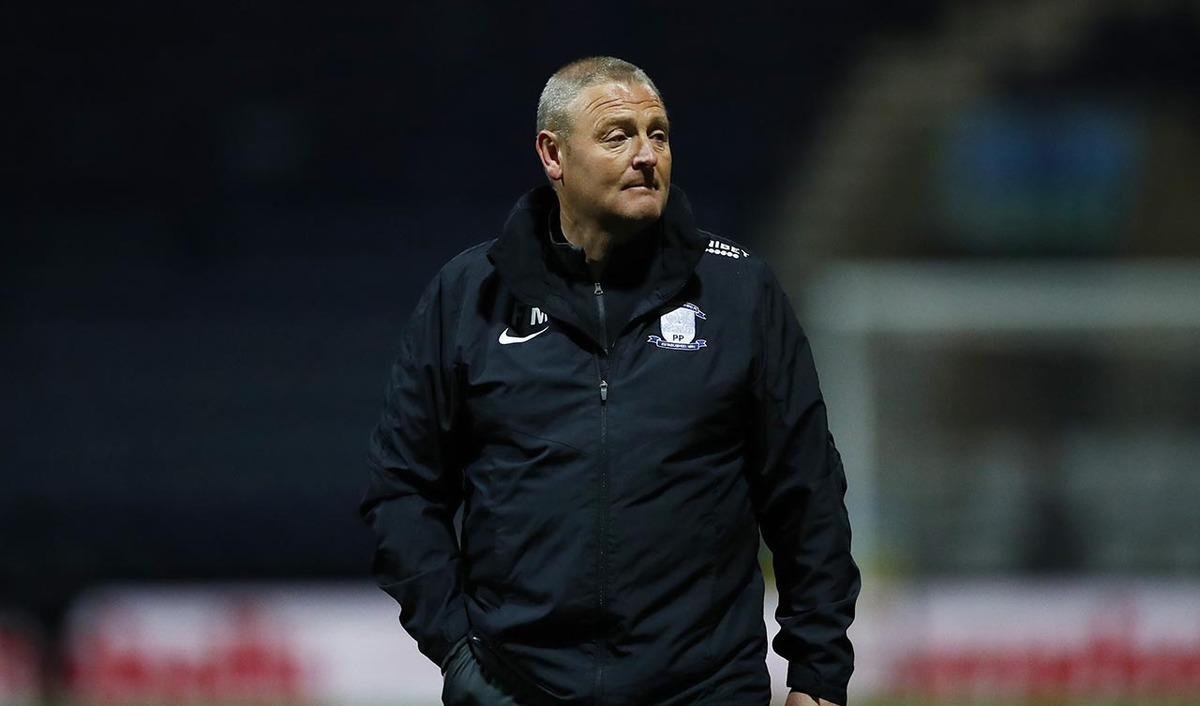Wide attacking in a 3-5-2 formation

| Area | Up to full pitch |
| Equipment | Balls, bibs, cones, 4 mini goals, 2 full size goals |
| No. of Players | 20 players + 2 goalkeepers |
| Session Time | 5v5 possession: 9 minutes 9v9 structured possession: 6 minutes 10v10 structured possession: 12 minutes 11v11 game: 24 minutes |
This session is based on attacking at pace with wing backs in the wide areas of the pitch. It’s all about getting the wing backs into good attacking positions when our team has the ball. It also focuses on applying immediate pressure to the opposition when they have the ball in order to regain possession as quickly as possible and then punish the opposition on transition.
In this session we want our team to demonstrate good communication and organisation, high intensity teamwork, crisp passing, an excellent first touch and explosive transition skills.
We would use this training session in the week leading up to playing against teams that play with a narrow midfield in either a 4-4-2 or a compact 4-4-1-1 system.
“This session is all about getting the wing backs into good attacking positions when our team has the ball”
5v5 POSSESSION
We set up a playing area of 35x25 yards with a mini goal on each of the four corners. We’re using 10 outfield players split into two teams of five. Both teams are set up in a 1-3-1 formation and we play a directional 5v5 game with the emphasis on getting the wing backs high up the pitch and into good offensive positions when the team is in possession. Players are free to move between zones but goals can only be scored from inside the final zone, as shown [1].
When their team is in possession, we want to see players making good off-the-ball movement, matching runs, and making the pitch as big as possible. When their team is out of possession we want to see players using good organisation behind the ball in order to get it back really quickly, denying space to the team on the ball and using good communication from behind.
We would usually set up two practice areas side by side and run two 5v5 games at the same time. We would play three games of three minutes on each pitch.
[1]

2. When their team is in possession, players should make good off-the-ball runs
3. The aim is to score in one of the mini goals at the end the team is attacking. But players must be in the final zone before they can take a shot
4. The out-of- possession team must organise well behind the ball and try to win possession so they can counter-attack
“We want to see players making good off-the-ball movement, matching runs, and making the pitch as big as possible”
9v9 STRUCTURED POSSESSION
[2]

2. The red team is set up in a 3-4-2 formation and they try to gain possession and counter-attack
3. Two yellow floaters play for the team in possession. They are two- touch and cannot score
4. The team in possession should be able to stretch the opposition and make use of their numerical advantage to create a scoring opportunity
“The emphasis is on the blues getting their wing backs high up the pitch and into good offensive positions”
We set up a playing area of 62x50 yards with a mini goal on each of the four corners. The playing area is divided into three zones.
We’re using 20 outfield players split into two teams of nine, plus two yellow floaters. The blue team is set up in a 3-5-1 formation while the red team is set up in a 3-4-2 formation, as shown [2].
Play should start with the blues. The aim of the game is for teams to score in one of the corner goals at the end they are attacking, with the emphasis on the blues getting their wing backs high up the pitch and into good offensive positions.
The two yellow floaters play for the team in possession and they are limited to two touches but they are not allowed to score goals.
Players are free to move between zones and the offside rule applies in the final zone of the pitch.
We want to see the blue team keeping hold of the ball. They should make the pitch as big as possible and use good off-the-ball movement and communication. We also want to see them switching play and using good combinations to attack. Above all, the team in possession should use their numerical advantage in order to create goal scoring opportunities once they have got the ball into the final zone.
When out-of-possession the blues should keep organised and try to regain the ball as quickly as possible, denying space to their opponents and shutting off passing lines.
We play for six minutes.
10v10 STRUCTURED POSSESSION
We use the same 62x50-yard playing area as before, with a mini goal on each of the four corners. The playing area is initially divided into three zones, just as before.
We’re using 20 outfield players, removing the floaters from the previous activity and splitting the players into two teams of ten. The blue team is set up in a 3-5-2 formation while the red team is set up in a 4-4-2 formation, as shown [3].
Play starts with the blue team and we play a structured possession game, with teams trying to score in the mini goals at the end they are attacking. The coaching points remain largely the same as before, with the emphasis on the blue 3-5-2 team getting wing backs high up the pitch and into good offensive positions by stretching the narrow midfield of the red 4-4-2 team.
We want to see good off-the-ball movement from the attacking team, plus clever combination play. The blues should attack in wide areas, supporting the front players, dealing with transitions and scoring goals. They should use high intensity pressing to win the ball back if possession is lost.
We play one game of six minutes with the offside rule applied in the final zone. Then we remove the zones and replace them with a halfway line, playing another game of six minutes with the offside rule applied from the halfway line.
“We want to see good off-the-ball movement from the attacking team, plus clever combination play”
[3]

2. The red team is set up in a 4-4-2 formation. They should try to regain possession and counter-attack
3. Here the blues switch the play to stretch the outnumbered red midfield
11v11 GAME
[4a]

2. The red team is set up in a 4-4-2 formation
3. Using their numerical advantage in midfield helps the blues pull the red defenders out of position
4. The movement of the blue wing backs should stretch the red defending team
“Once we win the ball back we look for quick, accurate passing to switch the play and to launch an attack at the opposite end of the pitch”
We set up on a normal pitch between the 18-yard line at one end and the goal line at the other, with a full size goal at each end. We’re using 20 outfield players split into two teams of 11 including goalkeepers. The blue team is set up in a 3-5-2 formation while the red team is set up using a 4-4-2 system.
We play an 11v11 game and the coaching points remain the same.
The focus should be on the blue 3-5-2 team getting their wing backs high up the pitch and into good offensive positions by stretching the narrow midfield of the red 4-4-2 team, as shown [4a]. By moving the red defenders, the blue attacking team is able to exploit possession with good combination play and the movement of the forward players creates scoring opportunities in the final third, as shown [4b].
We play three games of eight minutes each.
[4b]

2. The off-the ball movement of the blue forwards creates opportunities in the final third
COACHING POINTS
What are the key things to look for?
Technically, we need to keep the ball when we have it and move it at speed in order to penetrate in behind the opponents. Crisp passing, excellent control and good first touch are essential. Tactically, when out of possession we need to make sure the player pressing the ball shows the opponent outside, forcing him to play either a straight or angled wide pass or enticing him to try and beat him in a 1v1 situation. Team mates are locked on to their opponents, forcing the opposition to play down the one side of the pitch, making it easier for us to regain possession. Once we win the ball back we look for quick accurate passing to switch the play and to launch an attack at the opposite end of the pitch.
What are the typical mistakes players might make and how do I avoid them?
When pressing, players can use incorrect body positioning, allowing the opposition to play inside the pitch and to switch play. Pressing player can also sometimes be over eager to win the ball back before team mates are locked on, allowing the opposition to keep possession. The typical mistakes that players make can be rectified by bedding the principles down in the early activities of this session. Body positioning, communication, timing and the trigger of when to press are so crucial in order to win the ball back. It is vital that this information is bedded down early in the session and you would continue to refocus this message in the later activities.
Editor's Picks
Attacking transitions
Deep runs in the final third
Using the goalkeeper in build-up play
Intensive boxes drill with goals
Penetrating the final third
Creating and finishing
My philosophy
Pressing initiation
Compact team movement
Coaches' Testimonials

Alan Pardew

Arsène Wenger

Brendan Rodgers

Carlos Carvalhal

José Mourinho

Jürgen Klopp

Pep Guardiola

Roy Hodgson

Sir Alex Ferguson

Steven Gerrard
Coaches' Testimonials

Gerald Kearney, Downtown Las Vegas Soccer Club

Paul Butler, Florida, USA

Rick Shields, Springboro, USA

Tony Green, Pierrefonds Titans, Quebec, Canada
Join the world's leading coaches and managers and discover for yourself one of the best kept secrets in coaching. No other training tool on the planet is written or read by the calibre of names you’ll find in Elite Soccer.
In a recent survey 92% of subscribers said Elite Soccer makes them more confident, 89% said it makes them a more effective coach and 91% said it makes them more inspired.
Get Monthly Inspiration
All the latest techniques and approaches
Since 2010 Elite Soccer has given subscribers exclusive insight into the training ground practices of the world’s best coaches. Published in partnership with the League Managers Association we have unparalleled access to the leading lights in the English leagues, as well as a host of international managers.
Elite Soccer exclusively features sessions written by the coaches themselves. There are no observed sessions and no sessions “in the style of”, just first-hand advice delivered direct to you from the coach.









